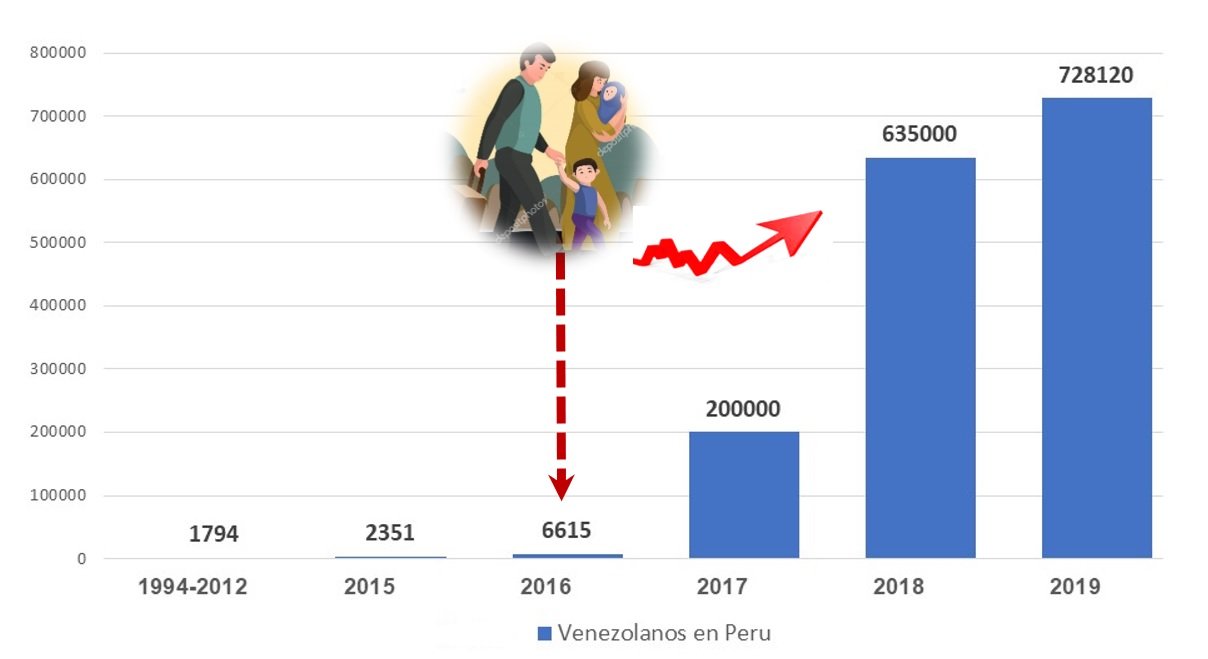EDITORIAL
REVISTA DE LA FACULTAD DE MEDICINA HUMANA 2019 - Universidad Ricardo PalmaDOI 10.25176/RFMH.v19i4.2334
MIGRATION AND THE EFFECTS ON PUBLIC HEALTH
MIGRACIÓN Y LOS EFECTOS EN LA SALUD PUBLICA
Manuel J. Loayza-Alarico1,2,a,b
1 Research Institute in Biomedical Sciences (INICIB), Ricardo Palma University, Lima-Peru
2 National Center for Epidemiology, Disease Prevention and Control
a Specialist in Epidemiology
b Doctorate in Public Health
Between 2000 and 2017, the number of international migrants was 173 to 258 million, representing a 49% increase in this period. In America, since October 2018, the migratory flow of nearly three million Venezuelans has been intensified; with about 1.7 million migrants(representing about 70% of the migration) being received in the countries of Colombia, Peru and Ecuador1.
In Peru since 2016, the flow of Venezuelans to the country has increased, from 6,615 residents in that year to 728,120 at the end of March 2019, being the most important migratory wave of the 21st century in Peru, turning it into the second country in the world to host the largest number of immigrant Venezuelans after Colombia. Currently, Venezuelans constitute the biggest foreign community in Peru.
Rapid and large-scale movements of people have triggered a humanitarian situation, a financial problem, and have tested the resilience of countries' health systems. In this way, the most frequent health problems among migrants who have just arrived are accidental injuries, burns, hypothermia, cardiovascular accidents, complications of pregnancy and childbirth, diabetes and hypertension, caused by the interruption of care, associated with lack of access to it or by the collapse of health care systems resulting in the interruption of continuous treatment, crucial for communicable and non-communicable diseases1.
Migratory movement can lead to the presence of diseases with high potential risk of rapid transmission in the countries in which they migrate and that are related to the epidemiological profiles of the countries from where they are migrating. Thus, malaria, diphtheria and measles are diseases that could cause epidemic outbreaks in countries receiving migrants from Venezuela. In this context, the International Health Regulations (IHR)2 whose purpose is to prevent the international spread of diseases and provide a public health response, while avoiding unnecessary interference with international trafficking and trade, recommends improving basic capacities at border points based on strengthening epidemiological surveillance and disease control actions, especially measures related to early detection of cases, timely diagnosis and immediate beginning of treatment, decreasing the transition and preventing the spread of cases.
On the other hand, refugees who are in irregular status prevent them from having access to an appropriate salary, which could have repercussions on the precariousness of living conditions, health status and access to health services3. The limited resources of arrival and the low income they can obtain, lead them to concentrate in marginal areas that present a high level of poverty and living conditions below the population average3. These conditions expose them to the increased sexual and gender-based violence, abuse, human trafficking, drug addiction, child abuse and alcoholism, leading to the risk of contracting infectious diseases such as sexually transmitted diseases, HIV and TB, as well as mental health and nutrition problems.
Correspondence: Manuel Loayza Alarico
Address: INICIB, Facultad de medicina Humana, Edificio I-208. 2do piso. Av. Benavides 5440, Surco, Lima, Perú.
Telephone: +51 708-0000/ Anexo 6016
Email: mloayzaa@yahoo.com
BIBLIOGRAPHIC REFERENCES

